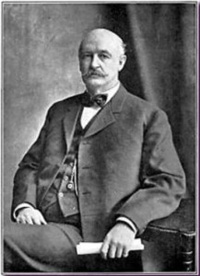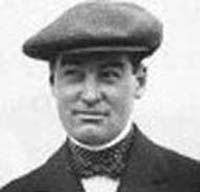Awakening ‘In Times of War’
Posted on 04 March 2019, 9:18
An abundance of communication from the “Other Side” suggests that many souls are slow to recognize that they have departed the material life. That is, there seems to be a “sleep” or “dream” state that precedes the awareness that the consciousness is no longer in the physical body. “The duration of the state of confusion that follows death varies greatly,” explained Alan Kardec, the pioneering French psychical researcher of the 19th Century. “It may be only a few hours, and it may be of several months, or even years,” Kardec wrote. “Those with whom it lasts the least are they who, during the earthly life, have identified themselves most closely with their future state, because they are soonest able to understand their new situation.”
If Kardec is right, then the anthology titled In Times of War: Messages of Wisdom from Soldiers in the Afterlife should be required reading for any person who thinks he or she might die at some time in the future. It includes a number of stories in which battlefield victims struggled to understand what happened to them after they were killed. “Realize that those souls in the lower regions of the astral world are actually in a space near the ground of the physical planet,” automatic writing medium Elsa Barker received from the discarnate David Patterson Hatch (1846-1912), a former Los Angeles lawyer and judge (as set forth in one of the chapters of this book recently released by White Crow Books). “Those who hang over the battlefields where they met their fate are still thrilled or horrified by the noise of the battle horns; they can still hear the shriek of shells and feel the shattering force of the explosions. Day in, day out, these unfortunate earthbound ones live over and over again the emotions of war; night after night, they dread the morning when the sounds will begin again. They cannot get away. They are not free merely because their bodies are buried under a few feet of earth, or worse still left unburied.”
Hatch (below) related the story an English friend, an officer in an English regiment who was killed by a German bullet in the early days of the Great War. Because of his hate for a German living in London, one who had competed with him for the love of a woman, the officer transferred his hate for the man to all Germans. After being fatally shot, he was unconscious for a time and then “awakened” to the noise of a bursting shell. He immediately returned to the battle scene, saluted a superior officer, but got no response, which he found strange. He approached other soldiers, even touched one of them on the shoulder, but they paid no attention to him. “The smell of the coffee and the cooking meats brought temporary satisfaction to my friend,” Hatch continued. “He tried to drink from brandy flasks tilted to the mouths of men who could not see him or protest; he steeped himself in hungers and despairs. His companions were always changing themselves into the forms of the man he hated and the woman he loved. He witnessed their coarse lovemaking. Sometimes the simulacrum of the woman turned to him with a friendly word. He cursed her, but clung to her hand. But always she vanished when his mouth yearned to hers.” The man was living a nightmare brought on by his hatred before death and his unawareness of what happens after death.

The anthology begins with the story of Private Dowding, now something of a classic in the metaphysical genre. Dowding was a 37-year-old British soldier killed on the WWI battlefield. Communicating through the automatic writing mediumship of Wellesley Tudor Pole, Dowding told of his initial confusion. “If there is a shock, it is not the shock of physical death,” Dowding explained. “Shock comes later when comprehension dawns; ‘Where is my body? Surely, I am not dead!’” He recalled that he saw two friends carrying his body on a stretcher and assumed that he had been injured, although he was confused by the fact that he was walking behind them and yet seeing his body on the stretcher. “I seemed in a dream. I had dreamt that someone or something had knocked me down. Now I was dreaming that I was outside my body. Soon I should wake up and find myself in the traverse waiting to go on guard.”
In another story, a Polish pilot was shot down and killed in the crash. However, as he remembered it, he got out of his crashed plane, ran to hide from the Germans, and encountered some French peasants. When he asked them for help, they did not appear to see him. At some point, he came to realize he was no longer occupying his physical body. “What you expect here, that you find,” he communicated through a medium. “You build your awakening, it is just as you imagined, at least that is what they told me. I expected nothing, so nothing came. But now I am pulling out of the difficult doldrums and am beginning to feel my strength.”
A British tank officer recalled falling face downwards in a swampy mud and then remaining unconscious for a time in something of a nightmare. “It was a time of conscious paralysis,” he communicated. “I hated it, and when something snapped and I was free, I was awfully relieved.”
As times seems to take on a different form in the afterlife, it is never quite clear as to how long in earth time it takes for the departed soul to recognize he or she has given up the ghost. In the case of Alfred V. (believed to be New York sportsman and socialite Alfred Vanderbilt - below), who was one of many victims on the Lusitania, which was torpedoed by a German submarine on May 7, 1915, it seems to have been more than a year. On November 5, 1916, he communicated with Dr. Carl Wickland, a psychiatrist, through the trance mediumship of Wickland’s wife, Anna, claiming to be hungry and cold and his clothes all wet. Dr. Wickland then helped him understand his condition.

The Spiritualist classic, Claude’s Book (not included in this anthology), relates communication between Claude, a British pilot killed when shot down by the Germans in World War I, and his mother through the trance mediumship of Gladys Osborne Leonard (See my blog entry of 29 Oct. 2018 in archives at left). Early on, Claude explains his passing. He first felt a blow on his head, a sensation of dizziness and falling, and then nothing more. “It may have been a fortnight or more later that I became conscious again,” he told his mother through Leonard, further commenting that he had no account of time there, so he could not be sure.
The Preface to this anthology by editor Jon Beecher is a fascinating story in itself as he tells of his own “awakening” to the reality of a spirit world. Leading a very materialistic life and not believing in life after death, Beecher had a rude awakening in 2000. “I just banged my head and woke up to a whole new worldview,” he summarizes his 11-page story. In the book’s Conclusion, Beecher notes the saying, “You are what you eat,” and suggests that after physical death “we are what we think.” A person’s “moral specific gravity,” or his “goodness” during the earth life, seems to be a big factor in the awakening process, but, from the stories in this book, indications are that a conviction that the soul lives on in a greater reality significantly expedites the awakening process.
Michael Tymn is the author of The Afterlife Revealed: What Happens After We Die, Resurrecting Leonora Piper: How Science Discovered the Afterlife, and Dead Men Talking: Afterlife Communication from World War I.
Next blog post: March 18
Read comments or post one of your own
|